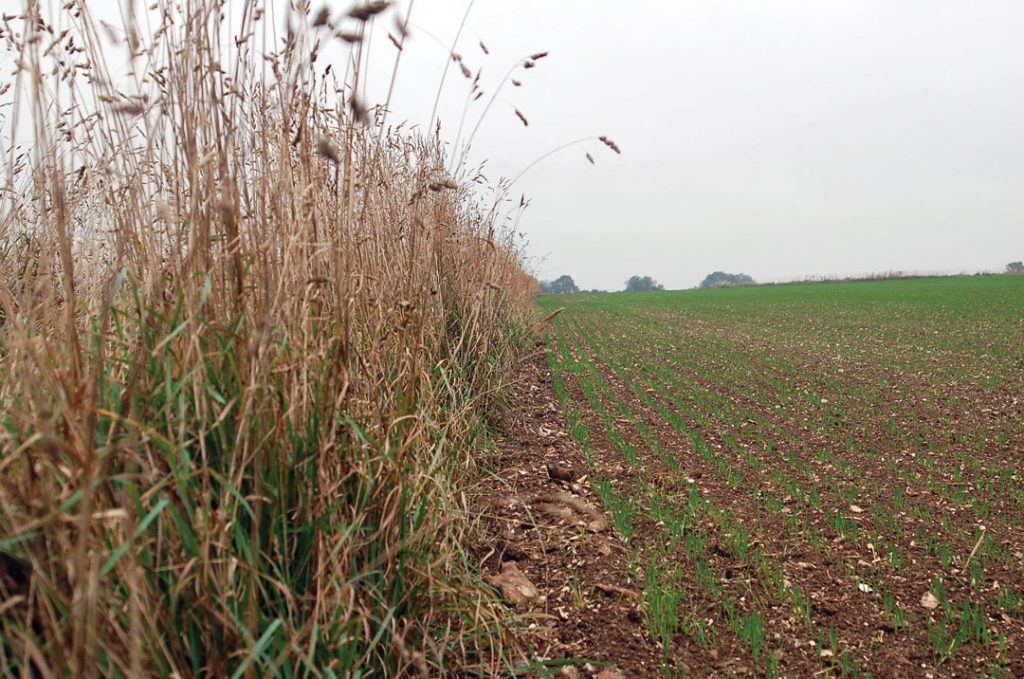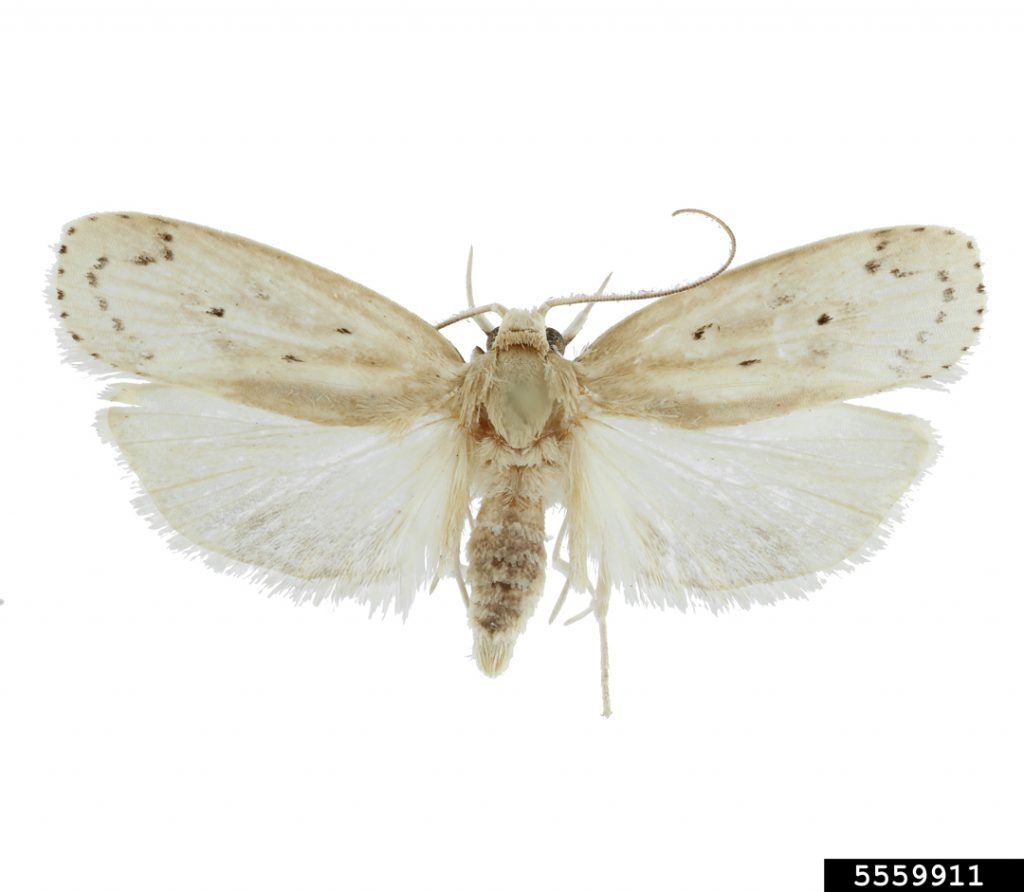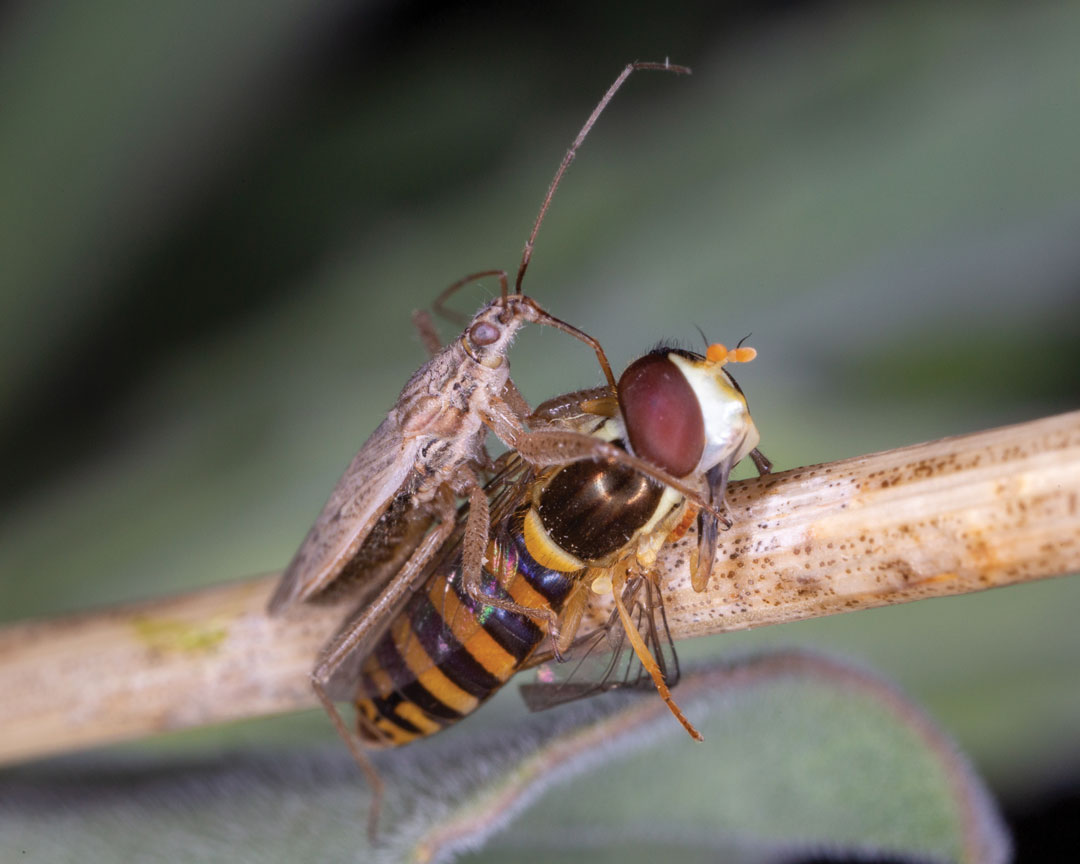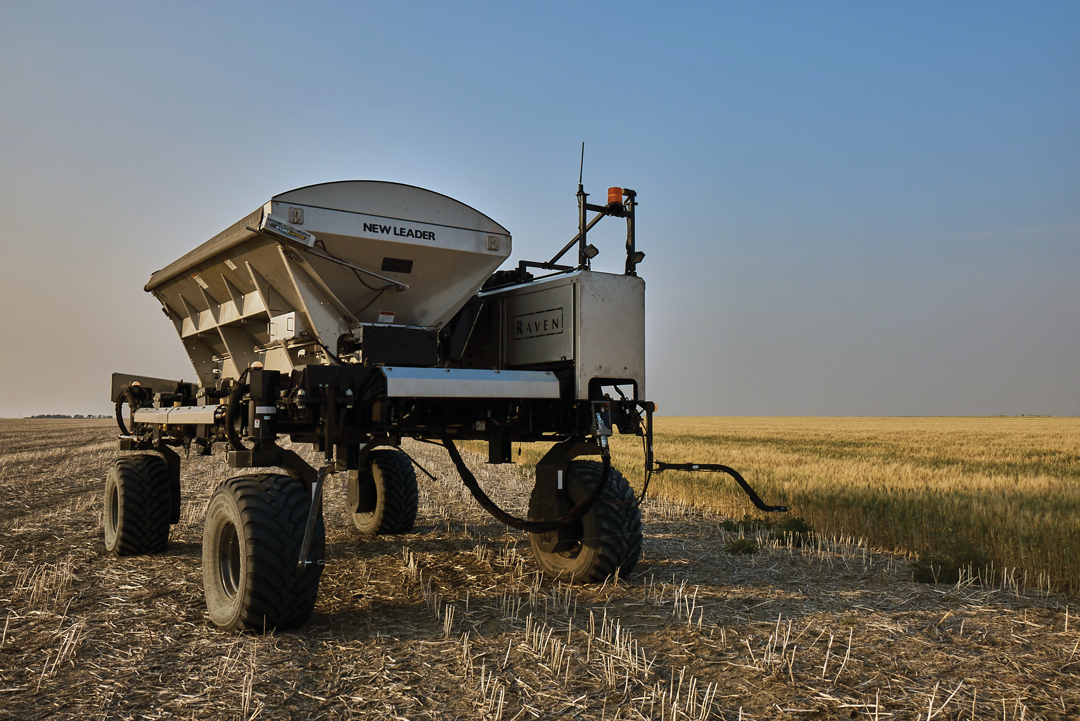INTERNATIONAL INSECT MANAGEMENT
BY TREVOR BACQUE • PHOTO COURTESY OF DAN JOHNSON
Farmers do not discriminate against pests. Of the two or three that assuredly lurk in the canopy of any given crop, they hate each one equally. It is for this reason GrainsWest was curious about the pest perspectives of farmers around the globe. What insect issues do they face with their crops? How have they attempted to best employ the services of beneficials at their farm? Canadian farmers may deal with a different array of bugs, but these distant perspectives may shed light on the collective fight against pests.

Andrew Watson
Boggabri, New South Wales, Australia
Andrew Watson’s farm runs parallel to a section of the 700-kilometre Namoi River which, when the operation began, possessed bare banks due to stock watering and erosion. There was not a gum tree in sight. Today, he and wife Heike have spent their farming careers revegetating the banks, which now teem with brilliant birds, micro-bats, insects and native grasses. This totally revived ecosystem also features impressive gum trees.
Watson was an early adopter of integrated pest management, and quickly came to appreciate the power of beneficial insects and predators. An ag economist by training, Watson understood birds and bugs could earn him money or, at the very least, help mitigate negative margins.
“We are taking it to the next extent,” he said of his long-term play via beneficials. “We are prepared to take a little bit of yield detriment to prove this works.”
Prior to the introduction of GMO cotton varieties, neighbours in his area sprayed cotton 15 to 18 times each growing season. With his program, combined with beneficials, he cut that number in half.
“Year in, year out, when I’m not spending money on applications, our average return on most crops is good
as anyone,” he said. “We give away yield, but not necessarily profit.”
In sections of old growth vegetation, due to their habitat suitability, Watson’s land is home to four times the national average of micro-bats. The winged mammals happily eat their entire body weight in insects every day. Multiple small bird species such as wrens also prey on common pests such as aphids, heliothis caterpillar moths, silverleaf whitefly, mites and fall army worm.
Spraying is always a costly proposition and Watson says he would spend about $55 ASD ($22 CAD) per acre for an insecticide and the aerial application of it. These days he still takes to the skies, but with drone technology at about the same cost per treatment. With work carried out by third-party Parabug Australia, powerful drones may cover 35 to 40 acres per battery charge. Affixed to the drone’s backend is a clear cylinder with holes around its circumference. Beneficials are loaded into the cylinder. Above the canopy, the tube rotates, slowly releasing the insects to begin their fight against predators. While this is incredibly popular in the strawberry and greenhouse industries of Australia, it’s relatively new with row crops.

This past year, he dropped one mite species onto his corn crop to combat another type of mite. The beneficials worked well and he believes he was the only one in his entire region who did not spray for the pest.
“But the question is: did we save more beneficials because we haven’t done any broadacre spraying in our corn for insects?” he said. “We are still in a learning phase, there’s not a lot of research.”
Other beneficial-friendly methods he uses include the set up of open buckets that contain sweet nectar mixed with insecticide at the headlands of fields. During weekly checks, Watson is pleasantly greeted by a hoard of dead diamondback moths at his feet. In addition, he utilizes manure, cover crops and a no-till farming system that leaves beneficial insects undisturbed and encourages maximum biodiversity.
His methods have also received some unlikely attention, as well. Australian clothier MJ Bale, which manufactures formal and business casual attire for men, recently shot an advertising campaign at Watson’s farm to discuss sustainably produced cotton.
Watson is now in similar talks with his corn miller about what the farm may offer it to help market to consumers. Although it’s not making him any financial returns yet, he knows that in order to capitalize on such opportunities, it pays to be ready. And he’s ready.
“We can see a future where we’d have sales and someone wouldn’t because of this,” he said.

Dave McLaughlin
Elliottsburg, Perry County, Pennsylvania, U.S.A.
Patience is a virtue, which makes Dave McLaughlin about as virtuous as they come. The dairy and grain farmer has substantially refined his philosophy and approach to insects, and is engaged in a lifelong learning process on the subject.
Fifteen years ago, he was unashamedly laying down “just in case” applications of insecticide on his crops, which are primarily soybean, corn, wheat, barley and alfalfa. Over the years, however, and through extension events and conversations with entomologists at nearby Pennsylvania State University, McLaughlin has learned that the insect ecosystem holds tremendous benefits for him.
All of this head knowledge proved useful in 2015 with an aphid-infested field of soybeans. McLaughlin and his agronomist noted the pests were at threshold levels, yet McLaughlin decided to zig and not zag. It was a calculated risk to forego a rescue treatment at about $14 USD/ac ($17.83 CAD) with the potential loss of about 20 per cent yield if he was wrong. “I opted not to treat because of the amount of lady beetles I saw attacking the aphids that day,” he said. “A week later we checked again, aphid levels had crashed.” Not only did he save the application costs, he saved the beneficials in his field, which include fireflies and ground beetles.
“I was hoping that the lady beetles would come through because I didn’t want the negative effects on the entire ecosystem of that broadcast insecticide treatment. The potential loss would have far outweighed to apply the rescue treatment.’’

The risk of losing two of his top three beneficials—fireflies and ground beetles—would have also hurt his ongoing fight against slugs. Officially a mollusk, slugs do not die when sprayed with insecticide. Insecticide treated seed is likewise an ineffective control. It doesn’t kill the slugs that consume it but is lethal to beneficials that in turn prey upon them. This caused McLaughlin to stop using treated soybean seed six years ago and he has not lost yield.
His threshold determinations are still carried out by walking the field and he relies on sweep net counts to determine if and when to spray. However, after his 2015 success, he has not been tempted to lay down that just in case application. “I am trying again to give all insects, especially the beneficials, a chance to live and thrive in my system,” he said.
It’s not just beneficials McLaughlin has integrated. He is also a firm believer in cover crops. Over the last 10 years he has slowly introduced cover crops to all his acres while maintaining the no-till system in place the previous five years. “If you believe that the beneficials can make a difference, give them a chance to work,” he said. “I have more insect life in my fields now than I did 10 and especially 15 years ago.”

John Holland
Fordingbridge, Hampshire county, England
Farmers in England continually seek new ways to get the edge on pests. In a country where stringent guidelines around certain insecticides exist, pest management is of critical importance.
Over the last 30 years, English farmers have taken note of the tremendous role beneficial insects may play in their fields, according to John Holland, head of farmland ecology with the Game and Wildlife Conservation Trust (GWCT). “Insecticides do have an impact on non-target species, which have an important role to play,” he said. “Farmers have come to recognize that. There’s more skepticism with agrochemicals and the reliance on them.”
Despite certain farmers’ suspicions around crop protection products, there is still a missing link when it comes to a greater uptick in farmers using beneficials such as lady beetles, ground beetles, spiders, hoverflies, lacewings and parasitic wasps.
A 2019 GWCT and Agrii survey of 182 farmers found 90 per cent adhere to integrated pest management (IPM) strategies of which 45 per cent had adopted practices to supply beneficial insects with better natural environments, recognizing their importance in crops.
“Lots said they were practicing integrated pest management, but when you drill down to what they’re doing, their interpretation is different,” he said. “That evidence is coming together but farmers aren’t doing it in a comprehensive setting. For IPM to be successful a suite of measures is needed.”
And while there are economic threshold guidelines for farmers to refer to, not many hold the recommendations in great esteem. Most English farmers have a hired agronomist employed for one primary reason, to help achieve maximum yield. That approach is fraught with error from Holland’s perspective.
“[Agronomists] look after big acreages, they don’t have time to look at every field,” he said. “They take a broader approach, look at one or two fields and apply the same to all the fields. Farmers and agronomists are understandably risk averse with most crops and the uncertainty of IPM compared to pesticides is difficult to overcome.”
One method now embraced by increasingly more English farmers is that of a beetle bank. What appears as an unassuming mound of soil is actually a sprawling mansion, ideal for beetles to make a home and overwinter. Farmers seed the banks with a grass mixture and densities inside the banks can quickly reach 1,000 beetles per square metre. They are often utilized to divide large fields.

In spring, the beetles leave the banks and fan out in force, but only about 60 to 70 metres from homebase. This is inefficient, but better coverage is achieved when banks are placed throughout the field. The banks additionally prevent soil erosion, impeding the flow of surface water. A bank is often two to three metres wide and can be as long as a farmer wishes to make it. To allow for movement of machinery, particular banks run the entire length of a field but don’t connect to field boundaries.
Farmers have also begun to experiment with cover crops and flower strips to attract additional beneficials to their fields. Anecdotally, results show promise as these methods do help draw insects.
With the recent neonicotinoid ban on oilseed rape, however, farmers are shifting away from the crop, which has limited rotational alternatives, primarily faba beans, peas and flaxseed. Neonics, “the perfect solution,” handled flea beetles, the common predator of oilseed rape, Holland explained. “Before, you have one neonic seed dressing. Now, you have two to three broad spectrum foliar applications.”
Holland suggested there is more work to be done to educate farmers about IPM techniques.

Paulo Katsuo Tsuge
São Gotardo, Minas Gerais state, Brazil
Editor’s note: These interviews were translated from Portuguese by Brazilian agricultural journalist Daniel Azevedo Duarte.
Watching over more than 2,000 acres of avocados is not a simple job, but it is what Paulo Katsuo Tsuge and his nearly 200 employees do each and every day during the growing season. The 36-year-old farmer of Japanese heritage has roots in Brazil going back to 1954, when his grandfather immigrated to the country to farm.
The Cerrado Mineiro region, primarily famous for its coffee production, is somewhat more temperate than other parts of Brazil, typically around 18 to 23 C during the growing season. This is perfect to produce his stone fruit, which is enjoyed locally as well as in Argentina, Spain and the Netherlands.
His biggest worry for pests is the Stenoma catenifer, or avocado moth. Each moth can lay 150 eggs inside a single avocado. Larvae simply eat their way out of the fruit, and multiple quickly. “They can destroy, potentially, the entire production,” said Tsuge.
A vital beneficial insect of the moth is a parasitic wasp of the trichogramma genus. Since 2017, Tsuge and other farm workers have bred the wasps on-site in a secure facility. They are capable of producing 7.7 million eggs each year. The wasps are released weekly and lay their own eggs inside the moth eggs, parasitizing them before they reach the larval stage. “This insect proves to be highly efficient against the moth,” he said. “Aligning sustainable management into production is always a considerable achievement.”
Because pesticides against the moths may have negative effects on bees and other organisms, Tsuge minimizes spraying. “Beneficial insects are highly efficient against this pest and preserve other [insects’] lives for us to be more sustainable,” he said. “The integrated model shows more results on production and reducing costs.”
Tsuge’s use of the parasitic wasp as a primary defence against the moth has allowed him to use Group 4 and 5 chemistries rather than Group 1, 2 and 3, which typically have stronger, possibly unintended consequences for other beneficial or neutral insects.

“The chemicals already are not the main tool against plagues. Our cultural control and integrated management guarantee less costs and fruits without any residue,” said Tsuge, who adds he spent about 20 per cent of this year’s budget on beneficial insect management.
Overall, Tsuge and other farmers have embraced a hybrid model of chemical and biological controls. According to Cleber Soares, director of innovation at the ministry of agriculture, livestock and supply: “In Brazil, in the last three years, there has been an increase in registration of biological products
and there is constant introduction of national and imported new products into the market.”
Countrywide, there are 25 million acres dedicated to biological pest controls and more than 40 million under production through the aid of bacterial plant growth promotors. “Biological inputs bring annual savings around BRL $165 million [$383 million CAD] through products for biological pest control, in addition to another USD $13 billion [$16.6 billion CAD] brought alone by biological nitrogen fixation on soybeans. These savings tend to increase in the coming years, especially due to market expansion of bio-based products in Brazil and in the world,” said Soares.







Comments